This Week in Games
Pokémon, Kaiju, and Pals
by Jean-Karlo Lemus,
Welcome back, folks! I've been playing the much-anticipated summer event in Goddess of Victory: NIKKE. It's what you expect: the bathing suits are scandalous, and the Live2D animations are Live2D, but the story is surprisingly good. It's not Shakespeare, but the NIKKE events do a ton of heavy lifting for fleshing out character backstories. Sure, much of it revolves around Nikkes throwing themselves at the player character, but at least the game is up-front about the Nikkes and the commander having a ton of fade-to-blacks. Also, the summer event has a nice fishing minigame with a ton of cute references. Many of the fish are obvious Spongebob Squarepants references, but one of them really tugs at the heartstrings...

It's been a few months since Toriyama's passing, but this one still hurts.
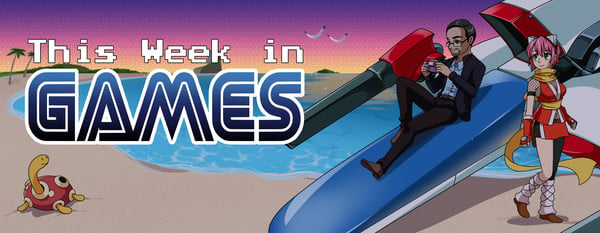
Looking Back on Eiji Tsuburaya and Pocket Monsters
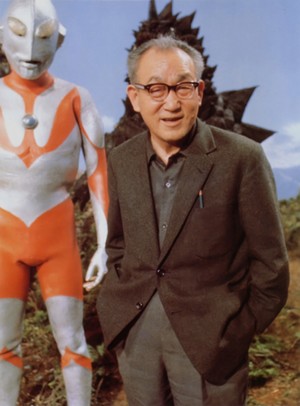
July 7 was the late Eiji Tsuburaya's birthday. For folks who don't recognize the name, Tsuburaya and his eponymous studio were the creators of Ultraman, the iconic Japanese superhero (also, his computerized cousin Gridman). There's a lot that could be said about Tsuburaya, from his brilliant approach to practical special effects, his work on films like Godzilla, or the way how he was able to continuously produce such imaginative visuals on a TV budget in 1960s Japan on a weekly basis. The mind reels to think what would have happened if Eiji Tsuburaya had ever collaborated with Roger Corman—ye gods, we were denied some absolute magic. But I want to focus on something different with this one. See, Tsuburaya's influence on pop culture is unparalleled—the creation of Ultraman alone has affected countless media in the ensuing decades, many of which have their own take on the titular Giant of Light. (I'd recommend folks play Attack of the Friday Monsters! A Tokyo Tale for more reference, but that game is sadly out-of-print, what with the 3DS eShop's shuttering.) But I wanted to focus on something more specific: Pokémon.
Because many people who are into anime don't watch tokusatsu, many references fly over people's heads. Neon Genesis Evangelion is one big send-up of the best of Akira Jissoji's Ultraman episodes (plus the Eva units themselves being giant alien cyborgs with batteries that last only three minutes) is one that people bandy about a ton. Still, there are so goddamn many tokusatsu references in Pokémon. I once saw someone claim that anime fandom trying to talk about anime without understanding tokusatsu is like trying to talk about American animation without mentioning the Looney Tunes, and I think that's apt. A lot of the creatives that made modern anime grew up freebasing Ultraseven or Kamen Rider, and a ton of that DNA is in Pokémon. And I don't mean with obvious stuff like how Lokix is basically Kamen Rider Black RX, or even more subtle stuff like how Pokémon's "low HP" alarm is just an 8-bit version of Ultraman's color timer or how Pokémon can only stay in their Dynamax/Gigantomax form for three turns (also, the dirt kicked up when Dynamax Pokémon appear evokes the practical effect of an Ultra "landing" once they finish their Rise)—I mean deeper stuff on a philosophical level.
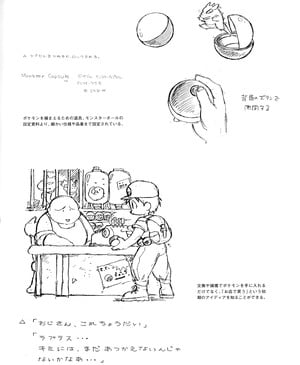
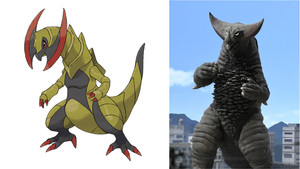
See, kaiju in Ultraman can come from anywhere. Some kaiju are just a part of nature, creatures disturbed by the neglectful acts of humans who upset the balance of nature. Some kaiju are flat-out supernatural, like an illustration brought to life by a dead child's restless spirit. Only some kaiju are aliens. Pokémon reflects this really well: some Pokémon are just weird analogs for real-world animals. Some Pokémon defy the natural order, being undead spirits from beyond the veil or creatures capable of flat-out magic. And some Pokémon like Deoxys or the Ultra Beasts defy classification—they're in the Pokédex, but they're such utterly alien beings that we can't even be sure they have much in common with other Pokémon!
But there's more to it: Tsuburaya's outlook on kaiju and monster design veered into the bizarre, with some kaiju representing twisted takes on modern-day life such as Kanegon, the purse-like monster who eats coins—akin to Pokémon like Voltorb or Varoom, who are strongly implied to be manufactured objects that gained sentience. Tsuburaya's monsters, however, never veered into the grotesque. Monsters were many things and represented many concepts, but their horror was always a mirror of the banal evils of humanity. Jamila the Planet-Dwelling Monster was a mutated astronaut left for dead by the United Nations on an alien planet—SSSP member Ide bitterly resents the inhumanity of the politicians who doomed Jamila to their fate more than Jamila's revenge-fueled rampage. Seabozu the Ghost Monster was made of the reawakened bones of past killed kaiju; Ultraman sends him back to the interstellar Monster Graveyard (after much scolding), where Seabozu can rest in peace. Alien Mefilas the Malicious Alien tries to convince a human child to grant him ownership of the Earth; the child refuses, affirming the goodness of the human heart. But will the subsequent human Alien Mefilas encounters be so pure? Cubone the Lonely Pokémon wears the skull of its dead mother; any possible horror in the situation is defused by Cubone crying out at night in grief. Parasect the Mushroom Pokémon is an insect whose will is totally consumed by the mushroom growing on its back. But this is just a part of its natural life cycle, and the mushroom is no more malicious than any other creature in the world. Garbodor the Trash Heap Pokémon is literal sentient garbage. When Arceus embraces Its creations with Its hundred hands, will a Garbodor not be part of Its choir?
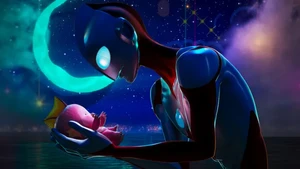

The other, final gift Tsuburaya passed on through Pokémon, though, is a love of technology. Ultraman comes from an era that was very hopeful and excited at the prospects of the future and the promises that technology could offer us. Improved crops that could feed more people. Cures for impossible diseases. Ships that could take us anywhere. Machines that could protect us from natural disasters. Ultraman—the giant, not just the show—was the promise that humanity could be better. And Pokémon reflects this. We can digitize and store Pokémon on PCs—in the 90s, where storage space was measured in megabytes and not terabytes. Pokémon can be traded wirelessly around the world, forging connections between children on opposite sides of the planet. No injury is too great that can't be cured by the machines at a Pokémon Center. The world of Pokémon is an embarrassment of riches where you must consciously decide to be greedy or selfish. And even with everything that technology gives us, there's always something new around the corner to discover. Somewhere out there is another friend you've yet to make. We haven't failed, the world isn't doomed—we just haven't figured things out yet.
Monsters can be scary, but hope is powerful. A lot of kids grew up learning that through Tsuburaya's works, and kids today learn that through Pokémon. It's a grand legacy to be a part of, I think. Eiji Tsuburaya died in 1970, 26 years before Pokémon Red debuted in Japan. I'd like to think he'd be proud of it.
Today is Godzilla and Ultraman co-creator Eiji Tsuburaya's birthday!
— Kaiju No. 14 (@14_kaiju) July 7, 2024
Here's a video of him being interviewed by two of his monsters from Ultra Q pic.twitter.com/hv1O5JslbN
F-Zero 99 Continues To Get Updates
Jeez, someone really cares about F-Zero 99 over at Nintendo! F-Zero is one of those franchises that a lot of longtime Nintendo fans bemoan over its prolonged absence. There hasn't been a "new" F-Zero since 2004's F-Zero Climax on the GameBoy Advance. But that "new" is in quotation marks because there is a new F-Zero game: F-Zero 99, the F-Zero-themed battle royale game Nintendo released in September of 2023, in the style of Tetris 99 or Pac-Man 99. It mostly recycles assets from the original SNES F-Zero, but it's a darn fun take on the "battle royale" format and very authentic to the F-Zero spirit because of it. Crashing into other racers to take the lead is already a major part of the game. F-Zero 99 just leans into it while balancing your urge for violence with your Boost power. And Nintendo keeps updating it. There isn't much they can add since all the available tracks are just the ones from the original F-Zero. They can't even add new machines past the four original ones (Blue Falcon, Golden Fox, Fire Stingray, and Wild Goose). But Nintendo has managed. You can unlock oodles of stickers and alternate color palettes, all of them hidden behind achievements. There are also loads of customization options for your profile card, from backgrounds to frames to stickers—and not one is available for purchase. In fact, F-Zero 99 doesn't have a cash shop at all.
Over the past year, Nintendo added minor features to F-Zero 99, like mirrored tracks with new obstacles or Weekly Challenges that can grant players new effects for their Boosts or Spin Attacks. But just as these new goodies were getting a little dull, Nintendo has gone and added a slew of new stuff for F-Zero 99 last week. And I'm stunned that people aren't talking about them!
Additional new content for F-ZERO 99 is now available for #NintendoSwitchOnline members!
— Nintendo of America (@NintendoAmerica) July 4, 2024
➡ Star Rivals
➡ Festival Tracks
➡ Expanded Team Battles
➡ New achievements
➡ Weekend Events
➡ Emotes
Learn more: https://t.co/QH70gP3EMZ pic.twitter.com/Q6jYmFW5H9
So, first off, Team Races has been completely revamped. Originally, Team Races would divide entrants into one of two 50-man teams. Your performance in a race—lap times, attacking and KO-ing enemy racers, that kind of thing—would grant you points, with the winning team being whichever scores the most. It's possible to do really well but still lose a Team Race because the rest of your team underperformed—which was the major problem with Team Races. It would be pretty easy for either team to score a very early lead, and once they had that lead, it was hard to overtake them. Hence the new update for Team Races: instead of two 50-man teams, Team Races consist of five 10-man teams. Instead of charging your own Super Boost, any energy you collect goes towards the entire team; if you get onto the Sky Road, everyone does (and earns bonus points). The result is a much more frantic race where your performance feels much more critical.
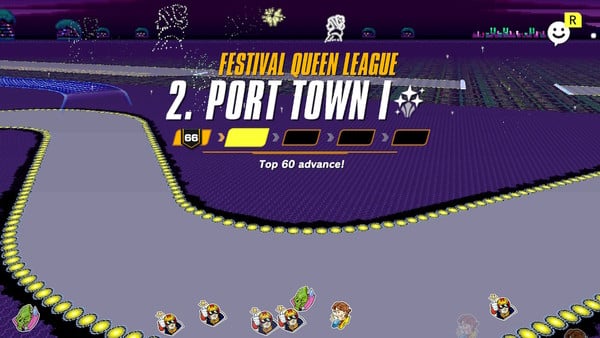
Second, we have emotes now! It's a simple thing, and you can't use them during the races proper, but players can now spam pics of Captain Falcon, Dr. Stewart, Samurai Goro, and Pico right up to the countdown to a race. It's also possible to encounter one of these named characters as a Star Rival in a race. If you beat them, you get a sticker of them for your profile card! Best of all, these are using the original SNES-era art for these characters. I love Captain Falcon, but his old SNES-era "Douglas Jay" design hits differently. I prefer it way more over the flamboyant F-Zero GX design used in Super Smash Bros (I know, out-of-character for me, but go figure).
Finally, F-Zero 99 has added Festivals. They're basically month-long events combined with a battle pass, but they're free. Certain stages are now denoted as Festival-versions of stages. Occasionally, you'll see fireworks in the background; these scatter little glitters you can collect on the road. Also, these collected glitters are added to bonus glitters you earn for things like your performance in a race or how often you attacked other racers. Earn enough glitters throughout the month-long festival, and you'll earn exclusive rare backgrounds, frames, or Boost/Spin effects! Because you'll only earn glitters on festival versions of tracks, there's no more motivation for players to vote for the more exotic maps like Red Sand or Silence instead of the usual Big Blue or Mute City for the umpteenth time in the hopes of getting more glitters.
The vibe I've gotten from what at least looks like a very vocal group is that they're rather bitter there isn't a new F-Zero, and I have to wonder what it is that's making them turn their nose up at F-Zero 99 for so long. Even if F-Zero 99 is a free-to-play battle royale, it does an amazing job of maintaining the spirit of F-Zero. Even if it's just recycling assets from the SNES original, they're putting those assets to fantastic use. Even if it's free-to-play, it's extremely respectful of your time and doesn't even feature any kind of monetization. It would be super-easy for the team working on F-Zero 99 to introduce new machines and charge folks for them, game balance be damned... but they're not. And here we are, ten months out from its release, and the team is still making new stuff for the game!
F-Zero 99 reminds me a little of Cartoon Network's Boomerang. Boomerang was a sister channel Cartoon Network eventually made once their original programming really took off and started pushing more and more of their older Hanna-Barbera stuff off the schedule. Sure, there wasn't a ton of demand for Hong-Kong Phooey or Jabberjaw, but in the spirit of Ted Turner's original vision for the Cartoon Network (archiving all of America's classic animation for future generations to enjoy), it behooved them to find something to do with them all. Boomerang's bumpers and channel stings never changed, but that was largely because they couldn't—Boomerang's profitability hinged on their budget being as small as possible (alas, Andy Merrill).
The folks in charge did the best they could, regardless, even if their bumpers announcing The Superfriends were playing for Teen Titans. F-Zero 99 feels like a similar labor of love; there's absolutely no money coming into that game, and I doubt anyone is subscribing to the Nintendo Switch Online service for the privilege of playing F-Zero 99. It stands to reason that their budget, if they have one, is in the ballpark of "two strips of construction paper and a picture of the letter 'i'." And yet, the team is still balancing the game, polishing mechanics, giving folks stuff to do, and giving them reasons to log in beyond being a simple Skinner box. Just when the weekly challenges had gotten a bit samey, we got Festivals. Just when I had written off Team Races, they were completely reinvented. I don't know how much longer F-Zero 99 will last; it feels like reaching the one-year marker will be a tremendous achievement for them. But man, am I cheering whoever is assigned to the F-Zero 99 project at Nintendo: those guys are showing a considerable amount of love.
New Tiny Miracle Announced: WayForward Brings Back Sigma Star Saga
It's not every day that we see what I like to call "tiny miracles": revivals of old cult classics, ports of long-overlooked favorites, or games rescued from licensing hell. And this here is one of them! WayForward Technologies is known these days as the house that Shantae built—and not for no reason; the famous Half-Genie Hero is their major breadwinner. It took a few games for WayForward to break mainstream in the gaming industry, but once Shantae and the Pirate's Curse was released, its combination of fun platforming, WayForward's trademark phenomenal 2D animation, and stellar vocal performances from the ever-charming Cristina Valenzuela made WayForward a household name. But before folks were turned onto Matt Bozon's charming cavalcade of sexy monster girls, WayForward was mostly known as an industry workhorse regarding licensed games. It took them a while before they could get their original titles off the ground, and while their quality speaks for themselves, they were still hard sells. Shantae was a GameBoy Color title featuring a female protagonist at the turn of the millennium; it had a very limited print run at the time. Xtreme Sports was a fun action game, but sadly easy to overlook. But WayForward kept up with their labors of love between well-received licensed games like Sabrina: The Animated Series: Zapped! and The Scorpion King: Sword of Osiris. And so it was that in 2005, WayForward made a little game titled Sigma Star Saga...
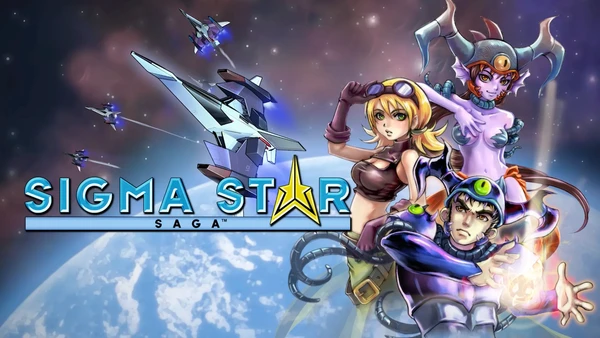
WayForward likes two things: making cute monster girls and mixing video game genres in strange and unholy ways. Sigma Star Saga was a game about a pilot, Ian "Ensign Expendable" Recker, who caught smack-dab in the middle of a war between humanity and an alien species known as the Krill, where Recker is faced to question his values at every turn. It was a combination RPG/shoot-'em-up: while wandering the overworld, Ian would be beamed up to a random ship in a side-scrolling shooter, where he would be tasked with gunning down several enemy ships. Leveling up from shooting down enemy ships (along with finding chips in the overworld) would grant Ian data that he could use to customize the bullet shapes or shot patterns for his ship, with over 15,000 possible combinations. It was a fun game, all done up with WayForward's lavish 2D animation. Sadly, it was a late GameBoy Advance game (the Nintendo DS had already been on the market for a whole year when SSS was released), so it didn't sell all that great. And while WayForward has done a phenomenal job of making sure as many of their games are available on every single platform under the Sun, Sigma Star Saga was sadly left in limbo. See, a pre-Bandai-merger Namco published it, and the rights had stuck with them for all these years. There wasn't much WayForward could do, and even creator/artist Matt Bozon had postulated with fans that it was more likely WayForward would produce a spiritual successor. Well, put another tiny miracle up on the board!
Yes, it's true! As announced at last week's Anime Expo panel, Sigma Star Saga will return! This fan-favorite shmup/RPG will be coming to modern platforms and as a GBA repro cart in 2025! Further details will be revealed in the future. https://t.co/Ibdy3bh2FC pic.twitter.com/EiIuYUYsl9
— WayForward (@WayForward) July 8, 2024
At Anime Expo, WayForward announced it would release Sigma Star Saga on "modern consoles," as well as in a limited repro-cart release for the GameBoy Advance. No word yet has been released concerning which consoles will be supported, but this is WayForward we're talking about. They'd release their games on Tiger Electronic handhelds if they had half a chance. I'll never know how they convinced Bandai-Namco to license the game, but it's a major victory. There are a lot of tiny games squatted on by bigger publishers, so anytime one of these titles gets freed from the vault, it is a major win for everyone.
As for what the remake might offer, it's tough to say. I'd imagine WayForward does a halfway decent job of preserving their Master copies. However, I also don't think it'll be possible for them to alter too much about Sigma Star Saga (especially since they're still going to release a GameBoy Advance copy). So, I guess there is no Cristina Valenzuela voicing alien-sweetheart Psyme. But WayForward's team did mention making a few updates to the game. My guess is they're fixing one of the old critical errors from the original game where you could randomly be assigned a massive block of a ship that would instantly collide with level geometry upon spawning in battle, trapping you into an instant death scenario until you reset at a previous savepoint. Also, maybe toning down the encounter rate a little.
To all the Sigma Star Saga believers: your ship came in. To everyone else waiting for their own tiny miracle: don't lose hope. We're in unprecedented times, and things are very stark for the industry. But miracles can still happen.
Nekopara Games To Receive Remasters
I've never played the Nekopara games. The games just haven't really appealed to me. Not that I don't think they're good; they're just not my speed. But I know they're dearly beloved by many visual novel fans for many reasons. Taking place in a world where there are cats who look like people, the series is about a young man who opens his own café while employing a gaggle of cat women as waitresses. There's a lot to love about Nekopara; folks get attached to the characters plenty, but the visuals are also sumptuous, and the character sprites have a degree of animation that sells their personalities.
With Nekopara's 10th anniversary approaching this December, creator Sekai Project has announced that the Nekopara series will be receiving a remastered series, starting with Nekopara Remastered Vol. 1 due sometime during Q4 2024. For now, the most we know is that the remasters will feature updated characters and full HD support', so the game will look as good as it ever will.
Update on NEKOPARA After - La Vraie Familie, it is currently in development! pic.twitter.com/Bj4A2H0Hcu
— Sekai Project (@sekaiproject) July 5, 2024
But Sekai Project had more in store for Nekopara fans, as now a new standalone release is coming to the series! The announced Nekopara After: La Vraie Famille, an expansion that takes place after the Nekopara series centering around the new catgirl Fraise, has been expanded further from just a DLC for Nekopara Vol. 4 to a standalone release! Currently, it's planned for release in 2025. No word yet on whether or not it'll incorporate the visual upgrades from the Remastered games, but one would like to think so.
I wish I had something profound to say about the Nekopara games, but they're a blank spot in my consciousness. Again, it's not that I don't think they're not good; they're not something I've prioritized getting into. But many people worldwide deeply love the Nekopara games. The series has endured for a decade now—no mean feat for any series. It even got an animated adaptation that aired four years ago. I hope the remasters add lots of fun things for the longtime fans.
Sony and Pocket Pair Form Palworld Entertainment—At Least They Didn't Call It "The Palworld Company International"
Well, it's been seven months since Palworld released, and the community has consolidated into a dedicated group of folks who really love it and are excited with the new Sakurajima update (which adds a region based in Japan with a smattering of new Pals). The hype has majorly died off from Palworld, but mostly because much bigger releases have come out, like Persona 3 Reload or Final Fantasy VII Rebirth—along with the simple matter that it took developer Pocket Pair seven months to add new content. It didn't have an Arena mode until just last month. I know folks are enjoying it some since folks in my social circle are still stanning it hard, but I'm mostly satisfied with the eight hours I spent in it, if only because survival crafting games are just an exercise in teeth-grinding tedium for me. If I want a monster-raising game that isn't Pokémon, , I'm not exactly starved for choice.
Nevertheless, Palworld was a major release this year. Would I call it one of the best games of the year? Not unless 70% of the other major releases from this year didn't exist. But you don't get 24 million users within your first month without raising a few eyebrows, and the eyebrows at Sony were definitely raised—hence the announcement that Sony Music Entertainment, Aniplex, and Pocket Pair have established Palworld Entertainment: a conglomerate dedicated to expanding Palworld's outreach worldwide.
ANNOUNCEMENT #1
— Palworld (@Palworld_EN) July 10, 2024
Pocketpair is excited to announce a joint venture company with Sony Music Entertainment (Japan) Inc. and Aniplex, Inc., to establish Palworld Entertainment, Inc., to accelerate the multifaceted global development of Palworld and its further… pic.twitter.com/aHnlC8M6Pu
Considering their position, it's a brilliant move; I'm surprised Microsoft didn't capitalize upon Palworld sooner. Having Palworld all to themselves the same way they own Minecraft would've been a boon. Sony works, too, given its connections with media (they own Aniplex, after all). Pocket Pair, a notably small studio, gets some proper backing and support whereupon it can break out into mass media and get its own trading card game and merch.
I also think this is going to help Palworld find its own identity outside of "the Pokémon game Game Freak doesn't want you to play." Like it or not, Palworld lives entirely in conversation with Pokémon. It's not because so many Pals feel like such blatant copies of certain Pokémon, but because so much of Palworld's iconography is, for better or worse, lifted from Pokémon. Pal Spheres are just Pokéballs, and wouldn't it be cool if you could use Pokéballs to catch humans and treat them like Pokémon? Poachers are just Team Rocket with guns, because what's more damaging to an upstart ten-year-old than a gun? You can butcher Pals because they're animals, so why wouldn't you? But on a deeper level, what is Palworld about? Pocket Pair president Takuro Mizobe has gone on record that he prefers to pick up popular concepts without worrying about "originality", but even now it's hard to find a "point" to doing anything in Palworld beyond "because it's there." So it falls upon the same major problem games like TemTem encountered: it's just "Pokémon, but..."—and graveyards are littered with would-be franchises that were "[X], but...".
This is why branching out into other media will help Palworld. For one thing, making some kind of Palworld anime means establishing characters that folks can latch onto and retroactively put into your games. Sure, it's funny the first time you give not-Grookey a Uzi or butcher a poacher you caught in a ball—but eventually, it stops being noteworthy because it's all just busywork you're doing while amassing the resources you need to mine for the materials you need for Ancient Pal Spheres so you can capture an Alpha Quivern and potentially keep up with a new raid.
And I think that, ironically, this is going to lead to a situation where Pocket Pair and company find themselves having to make the same decisions that The Pokémon Company International made with Pokémon. Sure, we can have guns and poaching in our Palworld anime and have Legally-Distinct Ash deal with the creepy advances of a Levander for a Very Special Episode™, but the real money is aiming at kids, and you can't have folks saying "Cheeky bastard!" on Saturday morning television when Relaxosaur escapes from his Pal Sphere. Camel cigarettes came under fire in the 1990s over using Joe the Camel as a mascot on frisbees and mugs that you could earn with Camel Cash (that you got from buying cigarettes), which people claimed was an attempt at enticing children into buying cigarettes. Sony's deep pockets would likely help bail Pocket Pair out if they ever did something like the Boston Mooninite Panic of 2007... but also, Sony has the corporate know-how to know that making bright, cute kid-appeal characters wield realistic weapons might be a bad look for a franchise that isn't on-its-face exclusively aimed at adults. Or maybe they'll lean into the controversy, and the whole thing will wither on the vine because controversy as a fuel burns fast and bright. Who knows. It likely won't have as ignoble an end as Yokai Watch.
Let's wrap up with some quick tidbits
That'll do it for this week, I think. The heat was pretty nuts in my city this week, so hopefully, folks can keep cool. Also, good luck to everyone in Texas; hopefully, folks down South can get their electricity hooked back up right soon. Be sure to keep up with your loved ones in Texas, if you have any. I'm sure they'd appreciate it. Be good to each other; I'll see you in seven.
This Week In Games! is written from idyllic Portland by Jean-Karlo Lemus. When not collaborating with Anime News Network, Jean-Karlo can be found playing JRPGs, eating popcorn, watching v-tubers, and tokusatsu. You can keep up with him at @mouse_inhouse or @ventcard.bsky.social.
discuss this in the forum (22 posts) |